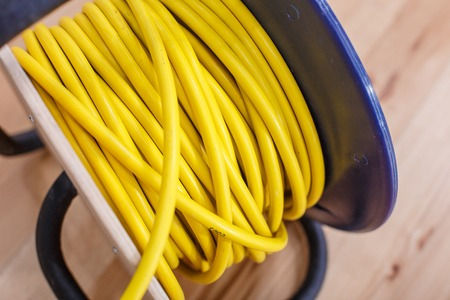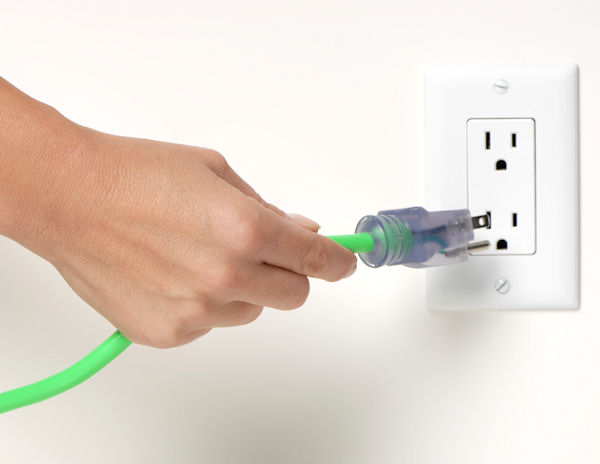Use the Right Extension Cord
The size of wire in an extension cord must be compatible with the amount of current the cord will be expected to carry.
The amount of current depends on the equipment plugged into the extension cord. Current ratings (how much current a device needs to operate) are often printed on the nameplate. If a power rating is given, it is necessary to divide the power rating in watts by the voltage to find the current rating. For example, a 1,000-watt heater plugged into a 120-volt circuit will need almost 10 amps of current. Be sure to choose a wire size that can handle the total current expected from all tools and equipment.
American Wire Gauge (AWG). American wire gauge (AWG) is a standardized wire gauge system used in North America for the diameters of round, solid, nonferrous, electrically conducting wire.
- #10 AWG—30 amps max.
- #12 AWG—25 amps max.
- #14 AWG—18 amps max.
- #16 AWG—13 amps max.
The length of the extension cord also needs to be considered when selecting the wire size. Voltage drops over the length of a cord. If a cord is too long, the voltage drop can be enough to damage equipment. Many electric motors operate safely in a narrow range of voltages and will not work properly at voltages different from the voltage listed on the nameplate. Even though light bulbs operate somewhat dimmer at lowered voltages, do not assume electric motors will work correctly at less-than-required voltages.
The grounding path for extension cords must be kept intact to keep you safe. A typical extension cord grounding system has four components:
- a third wire in the cord, called a ground wire;
- a three-prong plug with a grounding prong on one end of the cord;
- a three-wire, grounding-type receptacle at the other end of the cord; and
- a properly grounded outlet.
Also, when electric motors start or operate under load, they require more current. The larger the size of the wire, the longer a cord can be without causing a voltage drop that could damage tools and equipment.
Knowledge Check Choose the best answer for the question.
7-5. The size of wire in an extension cord must be compatible with the _____.
You forgot to answer the question!


